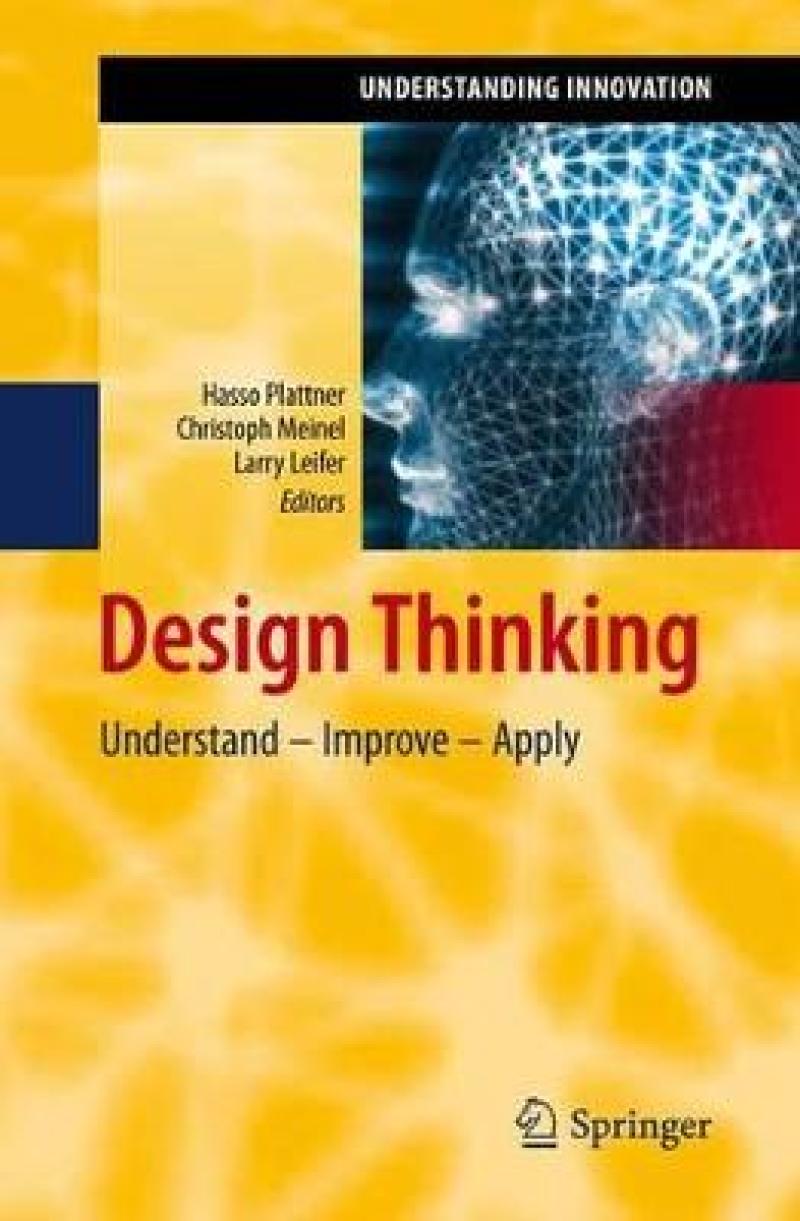“Everybody loves an innovation, an idea that sells.“ But how do we arrive at such ideas that sell? And is it possible to learn how to become an innovator? Over the years Design Thinking – a program originally developed in the engineering department of Stanford University and offered by the two D-schools at the Hasso Plattner Institutes in Stanford and in Potsdam – has proved to be really successful in educating innovators. It blends an end-user focus with multidisciplinary collaboration and iterative improvement to produce innovative products, systems, and services. Design Thinking creates a vibrant interactive environment that promotes learning through rapid conceptual prototyping. In 2008, the HPI-Stanford Design Thinking Research Program was initiated, a venture that encourages multidisciplinary teams to investigate various phenomena of innovation in its technical, business, and human aspects. The researchers are guided by two general questions: 1. What are people really thinking and doing when they are engaged in creative design innovation? How can new frameworks, tools, systems, and methods augment, capture, and reuse successful practices? 2. What is the impact on technology, business, and human performance when design thinking is practiced? How do the tools, systems, and methods really work to get the innovation you want when you want it? How do they fail? In this book, the researchers take a system’s view that begins with a demand for deep, evidence-based understanding of design thinking phenomena. They continue with an exploration of tools which can help improve the adaptive expertise needed for design thinking. The final part of the book concerns design thinking in information technology and its relevance for business process modeling and agile software development, i.e. real world creation and deployment of products, services, and enterprise systems.
Les mer
In 2008, the HPI-Stanford Design Thinking Research Program was initiated, a venture that encourages multidisciplinary teams to investigate various phenomena of innovation in its technical, business, and human aspects.
Les mer
Introductory Chapter: Thinking Research. - Part 1: Design Thinking in Various Contexts. - Design Thinking – A Fruitful Concept for IT Development?. - A Unified Innovation Process Model for Engineering Designers and Managers. - Product Differentiation by Aesthetic and Creative Design - A Psychological and Neural Framework of Design Thinking . - Part 2: Understanding Design Thinking. - Re-Representation: Affordances of Shared Models in Team-Based Design. - The Co-evolution of Theory and Practice in Design Thinking – or: “Mind the oddness trap!” . - Innovation and Culture: Exploring the Work of Designers across the Globe. - The Efficacy of Prototyping Under Time Constraints . - Part 3: Tools for Design Thinking. - An Instrument for Real-Time Design Interaction Capture and Analysis. - Tele-Board: Enabling Efficient Collaboration In Digital Design Spaces across Time and Distance . - Physicality in Distributed Design Collaboration . - Part 4: Design Thinking in Information Technology. - Bringing Design Thinking to Business Process Modeling. - Agile Software Development in Virtual Collaboration Environments. - Towards Next Generation Design Thinking: Scenario-Based Prototyping for Designing Complex Software Systems with Multiple Users . - List of Contributors
Les mer
“Everybody loves an innovation, an idea that sells.“ But how do we arrive at such ideas that sell? And is it possible to learn how to become an innovator? Over the years Design Thinking – a program originally developed in the engineering department of Stanford University and offered by the two D-schools at the Hasso Plattner Institutes in Stanford and in Potsdam – has proved to be really successful in educating innovators. It blends an end-user focus with multidisciplinary collaboration and iterative improvement to produce innovative products, systems, and services. Design Thinking creates a vibrant interactive environment that promotes learning through rapid conceptual prototyping. In 2008, the HPI-Stanford Design Thinking Research Program was initiated, a venture that encourages multidisciplinary teams to investigate various phenomena of innovation in its technical, business, and human aspects. The researchers are guided by two general questions: 1. What are people really thinking and doing when they are engaged in creative design innovation? How can new frameworks, tools, systems, and methods augment, capture, and reuse successful practices? 2. What is the impact on technology, business, and human performance when design thinking is practiced? How do the tools, systems, and methods really work to get the innovation you want when you want it? How do they fail? In this book, the researchers take a system’s view that begins with a demand for deep, evidence-based understanding of design thinking phenomena. They continue with an exploration of tools which can help improve the adaptive expertise needed for design thinking. The final part of the book concerns design thinking in information technology and its relevance for business process modeling and agile software development, i.e. real world creation and deployment of products, services, and enterprise systems.
Les mer
Based on scientific evidence from the HPI Stanford Design Thinking Research Program. Going beyond best practise in Design Thinking and Innovation. Points out how Design Thinking can be used to innovate IT-Development.
Les mer
Produktdetaljer
ISBN
9783642137563
Publisert
2010-12-18
Utgiver
Vendor
Springer-Verlag Berlin and Heidelberg GmbH & Co. K
Høyde
235 mm
Bredde
155 mm
Aldersnivå
Research, P, 06
Språk
Product language
Engelsk
Format
Product format
Innbundet
